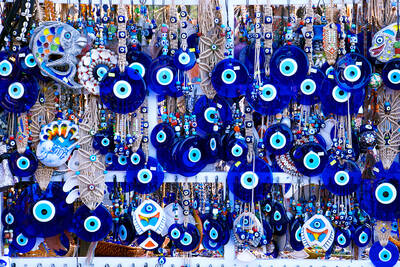Following the display of a Titan II ICBM missile and an exhibition about the FORMOSAT satellites, last Tuesday the National Space Organization (NSPO) donated Dagik Earth, a 3D presentation system of the earth for global geoscience data, to the Tropic of Cancer Solar Exploration Center in Chiayi County’s Shueishang Township. The system projects data images onto a spherical screen such as a white balloon, simulating real-life images in a way that actually feels like you are in space looking at the planets and planetary changes. The system is also highly portable. All you need is the Dagik Earth computer software, a projector, and a white spherical screen.
Major planning and construction for the Solar Exploration Center began during former Chiayi County Commissioner Chen Ming-wen’s term as county commissioner around a decade ago. Since then it has become the main institution for space education in the Chiayi and Yunlin areas. On average around 200,000 people visit the center every year.
The NSPO’s Deputy Director-General Yu Shiann-jeng was present at the event during which his agency donated the system to the center last Tuesday, and there to officially receive it was deputy county commissioner Lin Mei-chu. The achievements of agencies and personnel working in science education were also lauded during the event.

Photo: Wu Shih-tsung, Taipei Times
照片:自由時報記者吳世聰
The individual who acquired Dagik Earth from Kyoto University, where it was developed, NSPO chief scientist Liu Jann-yeng, says that the most valuable part of the system is its software, the rights for which Taiwan has obtained for educational purposes. The system collects planetary images, transformations and climate data from satellites and then simulates real-life 3D images in real time, making it a four-dimensional system. When connected with the Central Weather Bureau’s Web site, the system allows real-time observations of landslides and rainfall, for example.
Chen Shu-juan, head of the center, says that since the center is currently in need of more space, they obtained around three hectares of state-owned land to the southeast of the center, where they plan to open a second location — the “Southern Solar Astronomy Education Center.” Since the second location will be on the opposite side of the north-south railway line, they are also working to reopen the Tropic of Cancer Station. The center expects to get subsidies from the Ministry of Education to cover the estimated cost of NT$60 million needed to build the new location, she says.
(Liberty Times, Translated by Kyle Jeffcoat)
北回歸線太陽館繼泰坦二號火箭及福爾摩沙衛星展之後,上週二再添國家太空中心捐贈的「四次元地球數位展示系統」,透過投射白色球體,虛擬出衛星所蒐集的影像,真實呈現,有如從太空看星球及各種變化。只要有電腦軟體、投影機及白球體,系統就能帶著「趴趴走」教學。
北回歸線太陽館,從十年前前嘉義縣長陳明文時代開始大規模開發,已經成為雲嘉地區重要的天文教育重鎮,每年吸引近二十萬人次參訪。
國家太空中心上週二捐贈「四次元地球數位展示系統」給館方展出,國太中心副主任余憲政等人與會,由副縣長林美珠代表接受。會中也表揚協助科教活動有功單位及人員。
從日本京都大學引進「四次元地球數位展示系統」的國太中心首席科學家劉正彥說,此系統最珍貴的是軟體,台灣已經被授權可用於教學,將衛星蒐集的星球景象、變化及天候等虛擬實際的狀況立體呈現,加上時間的變化,所以是四次元,如與中央氣象局連線,包括土石流、雨量等都能即時觀察。
館長陳淑娟表示,現有場區空間不足,縣府已經取得東南方約三公頃的國有地,希望闢建第二園區成為「南區太陽天文教育中心」,因隔著縱貫鐵路,也將爭取北回歸線車站復站,預估所需經費約新台幣六千萬元,將向教育部爭取補助。
(自由時報記者吳世聰)

Rice is essential to Japanese culture, tradition and politics. People take pride in the oval-shaped sticky Japonica grain, which is still a staple even though total consumption has fallen over the decades. But since last summer, prices have soared as supplies have fallen short of demand. The government has long paid farmers to cut back on rice acreage, and change to other crops to keep rice prices relatively high. To cope with shortfalls this year, the government has released rice reserves. But the grain has been slow to reach supermarket shelves. Anger over that was part of the reason the Agriculture Minister

Step into any corner of Turkiye, and you’ll likely encounter the iconic “Evil Eye,” known as “nazar boncu?u” in Turkish. This striking blue glass ornament is shaped like an eye with concentric circles of dark blue, white, and light blue. While its name in English suggests something threatening, it’s actually a charm designed to ward off misfortune. The origins of the nazar boncu?u can be traced back to ancient Mediterranean and Middle Eastern traditions. The word nazar comes from Arabic, meaning “gaze,” while boncu?u translates to “bead” in Turkish. Central to the nazar boncu?u’s mythology is the idea that

Continued from yesterday(延續自昨日) https://www.taipeitimes.com/News/lang In 1946, the company adopted the name 7-Eleven to reflect its newly extended __3__, from 7am to 11pm, a novel concept at the time. As a rapidly growing company, it began offering franchise opportunities in the 1960s. In 1974, the first 7-Eleven in Japan was opened by the supermarket company Ito-Yokado. The Japanese franchises were __4__ successful that by 1991, Ito-Yokado was able to acquire a 70 percent stake in Southland Corporation. Its investments eventually resulted in full ownership of 7-Eleven, which paved the way for the Japanese company to enter the international market. Since then, 7-Eleven

A: Wow, Les Miserables Staged Concert Spectacular is visiting Taiwan for the first time. B: Isn’t Les Miserables often praised as one of the world’s four greatest musicals? A: Yup. Its concert is touring Taipei from tonight to July 6, and Kaohsiung between July 10 and 27. B: The English version of the French musical, based on writer Victor Hugo’s masterpiece, has been a huge success throughout the four decades since its debut in 1985. A: The musical has never toured Taiwan, but going to the concert sounds like fun, too. A: 哇,音樂劇《悲慘世界》紀念版音樂會首度來台巡演! B: 《悲慘世界》……它不是常被譽為全球四大名劇之一嗎? A: 對啊音樂會將從今晚到7月6日在台北演出,從7月10日到27日在高雄演出。 B: 這部法文音樂劇的英文版,改編自維克多雨果的同名小說,自1985年首演以來,在過去40年造成轟動。 A: